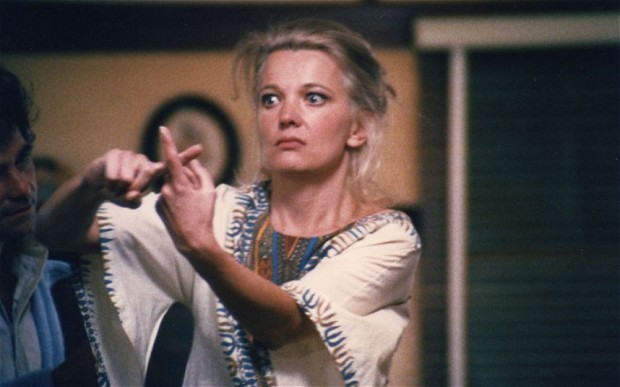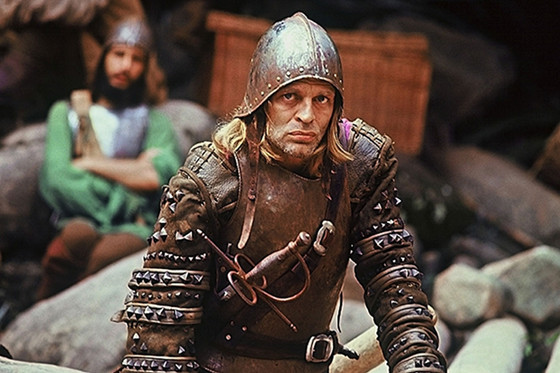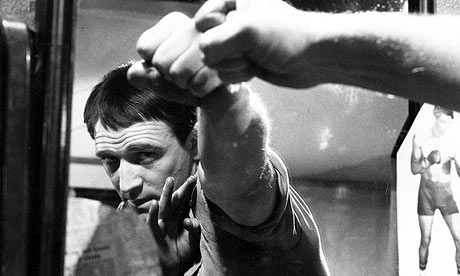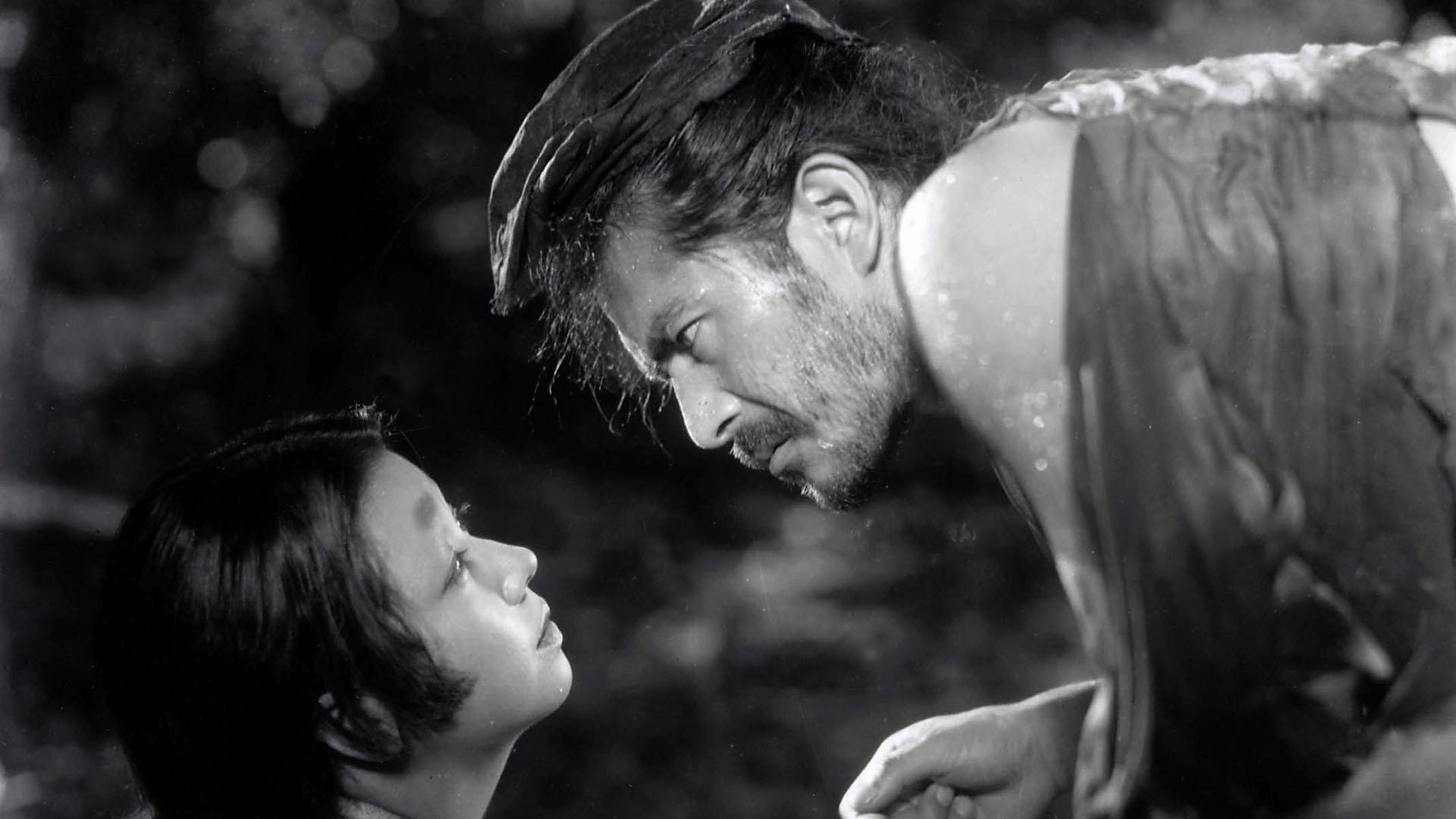5. Patrick Dewaere – Série Noire (1979) – dir. Alain Corneau

Alain Corneau’s loose adaptation of Jim Thompson’s hardboiled crime novel “A hell of a woman” is an example of unclassifiable film. “Série Noire” doesn’t fit squarely neither within a cinematic genre (despite sharing many stylistic and narrative traits with the noir genre, particularly with its late manifestations that obliterated the traditional figure of the policeman or private investigator – the enforcer of the law – and focused on the wrongdoer), nor within Corneau’s oeuvre (which is extremely heterogeneous, containing among others a sober biography of the XVI century composer Marain Marais, a historical epic and an adaptation of a novel written by the phenomenon of French auto-fiction literature Amélie Northomb).
If one would feel inspired, one could create a new label for “Série Noire”: the one of post-neo-realism. The analogy between Corneau’s feature and the movement that reinvigorated the crumbling Italian cinematic industry may seem audacious or worse, completely groundless.
Yet, there are a number of stylistic and thematic similarities between the two: the use of real locations (Corneau affirmed that not an object from the exterior locations was moved or altered in order to fit a pre-existent visual conception), the lack of make-up or the concentration on lower-class, financially struggling protagonists.
Then why post-neo-realism? Because Corneau demonstrates that he has integrated the lessons dispensed by the Italian school, but is also capable of creatively contradicting some of their fundamental postulates.
Of course, the most obvious transgression lies in Patrick Dewaere’s brilliantly manic performance that sweeps aside every possible conception of naturalistic acting. And yet – and this is the actor’s strike of genius – despite the fact that Frank Poupard is the product of a wild, unbridled imagination from head to toes, he also contains the essential traits the spectator’s perception needs in order to see in him his or her own frail humanity.
4. Gena Rowlands – A Woman Under The Influence (1974) – dir. John Cassavetes

When one talks about overacting, one will promptly think of silent cinema and its performers, who had a closer kinship with mimes than with contemporary actors. However, it would be mistaken to consider silent film acting as “overacting”: cinema before the advent of sound was a distinctive language with codes that have now mostly fell into disuse. But if the codes have become obsolete, the cinematic system, or the shell that contained these codes, has roughly remained unchanged.
For example, it was during the silent period that the star system was invented and flourished, first in Italy with the likes of Lyda Borrelli and Francesca Bertini and afterwards all around the world. The Italian divas showed to all instances of the cinematic industry, from marketeers to audiences, that mannerisms and the display of extreme emotions contained a sensual, almost sexual aspect and contributed to what Christian Metz would much later identify as an aspect of the essential nature of cinema, namely the perfect titillation of the spectator’s voyeuristic desire.
John Cassavetes seems to have integrated this lesson (consciously or unconsciously) and offers audiences with “A woman under the influence” an audacious blending of analysis of sexual politics with a lusterless, contemporary re-reading of the Italian diva act.
Gena Rowlands gives an excruciating, physically and mentally draining performance that is at once dejecting and arousing and thoroughly feminine, as it addresses the stereotypical figure of the hysterical woman while making this very woman a force of nature that s over her assigned social role.
3. Klaus Kinski – Aguirre, The Wrath of God (1972) – dir. Werner Herzog

Two different documentaries astutely describe the creative and personal bond that united legendary figure of the German New Cinema Werner Herzog and Klaus Kinski, an actor who made over a hundred films but is almost exclusively known for his five collaborations with Herzog.
The first one of these films is Les Blank’s enthralling documentary “Burden of dreams” that documents the vicissitudes of the production of Herzog’s madly ambitious ninth fiction film, “Fitzcarraldo”. Blank’s camera captures the tempestuous relationship between the director and his actor, dedicating an important part of its running time to Herzog’s increasingly bitter ruminations about the precariousness of the whole endeavor.
However, there are many other moments of unsurpassable euphoria that follow the achievement of a particularly difficult scene of the film, moments of untainted affection between the director and his leading man; this steers us towards the second film, Herzog’s own documentary about Kinski, appropriately titled “My best fiend”. The German director confidently affirms that his oeuvre would not have been as monumental as it is if he had not crossed paths with Kinski.
This assertion doesn’t impose itself anywhere as clearly as when watching “Aguirre, the wrath of God”. Despite most theorists’ habit of considering the actor a tool in the director’s hand and relegating him to the bottom of the hierarchy of expressive cinematic means, Kinski’s performance is the single most important element of Herzog’s historical allegory.
This should not diminish the worth of Herzog’s assured directorial voice or the depth of his political meditation; yet, Kinski’s tour de force, his monstrous creation that embodied the indelible crimes of the German nation is undeniably the binding agent of the whole film.
2. Richard Harris – This Sporting Life (1963) – dir. Lindsay Anderson

The British New Wave or Kitchen Sink Realism (the same term as the one used by critic David Sylvester to describe a trend in painting that specialized in the representation of domestic scenes) shares many similarities with the French New Wave.
Not only did they flourish roughly at the same time and they played a similar role in reinvigorating an ossified cinematic landscape, but the two schools also had a comparable (and quite inconsistent) treatment of the ontological relationship between cinema and reality.
The British New Wave and its French counterpart both promoted filming in real locations, with the available light, and forced audiences to stop averting their eyes whenever it came to the problems of working classes and mainly to the contemporary issues of the urban proletariat. But, in parallel with this social awareness, some films issued from these two movements also freely twisted reality towards formalism.
In this department, the British New Wave cannot compete with the likes of Jean-Luc Godard; and yet, elements like Richard Harris’ tempestuous performance in Lindsay Anderson’s first feature-length film “This Sporting Life” certainly wards off the restrictive label of “naturalism” that one could be tempted to apply to the Kitchen Sink films.
Harris’ character, rugby man Frank Machin, is a rebel in a truer sense than most legendary antiheroes of cinema, not because of his actions, but because of his very essence. Harris imbues him with a physicality which is in permanent sharp contrast with the way in which the other characters move through space: Machin is always on the rugby field even when inside the four narrow walls of his landlady’s house and, by extension, he sees his being-in-the-world as a fight.
1. Toshiro Mifune – Rashomon (1950) – dir. Akira Kurosawa

Akira Kurosawa’s breakthrough to international acclaim – in a time when Japanese cinema was regarded as a curiosity or a rarity that was only reserved to veteran cinephiles – has now become the object of incalculable studies.
“Rashomon” is among the few mythical films that have transcended the field of cinema and have been incorporated in the collective imagination, even giving its name to a type of situation that occurs when the same event is given contradictory interpretations by the different parties involved. But, as is the case with many Hitchcock films (with which “Rashomon” shares the intricacy of the plot and the murder mystery aspect), Kurosawa’s has been analyzed so thoroughly that its aura was mostly deflowered. However, at its core, “Rashomon” is a sensual film.
One is more likely to immediately recall its gorgeous shots of the forest bathed in sun-light than its solemn meditation on the relativity of truth. And Kurosawa’s frequent collaborator Toshiro Mifune’s performance certainly is one of the main elements that make “Rashomon” such a treat for the senses. Legend says that, a few days before shooting, the director showed his actor a recording of a tiger strolling and instructed him to acquire the physicality of the predator.
Embodying both the vileness and the heroism that characterize the historical figure of the bandit (in the other participants’ and respectively in his own version of events), laughing hysterically, sometimes moving jerkily, other times leaping gracefully, Mifune’s character is the embodiment of some kind of spirit of the woods, more animal than human.